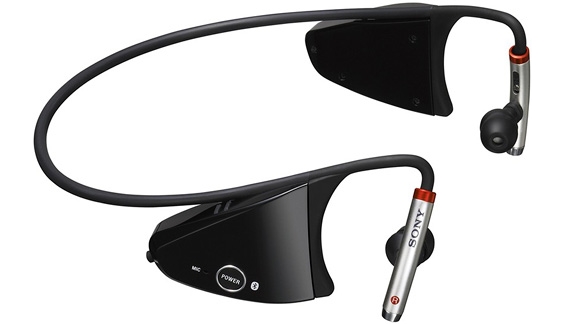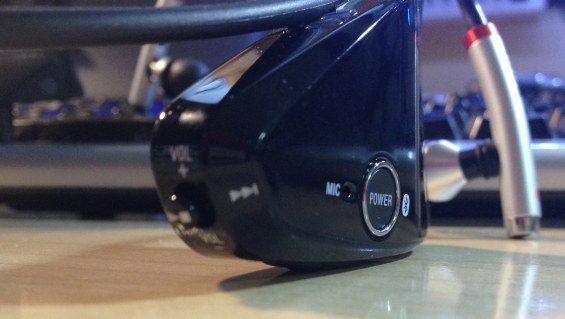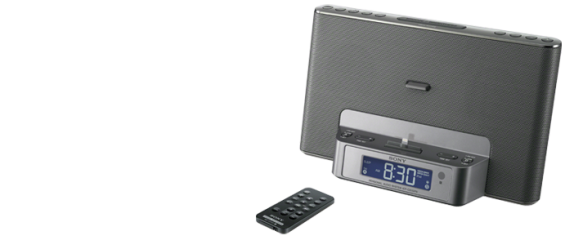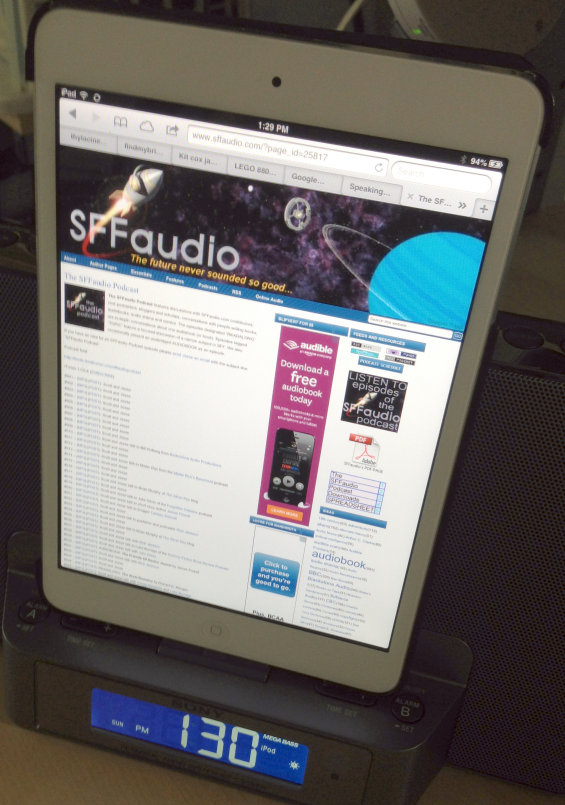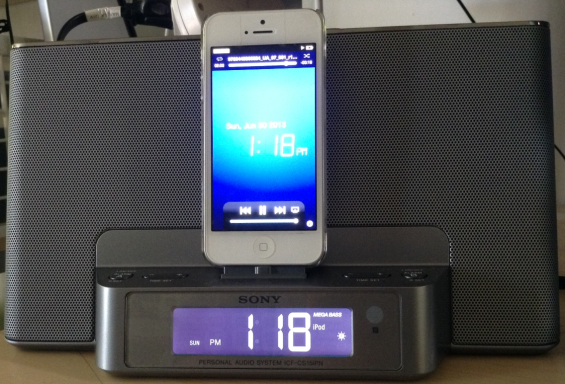
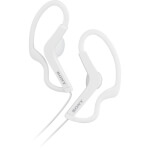 Sony MDR-AS200 “Active” Stereo Headphones [WHITE]
Sony MDR-AS200 “Active” Stereo Headphones [WHITE]
Manufacturer: Sony
UPC: 027242862500
Sony® headphones deliver dependable, quality audio reproduction time after time. Equipped with 13.5 mm high-sensitivity driver units, our MDR-AS200 Sports headphones are no different while also affording a secure, comfortable fit that lets you get close and personal with your workout.
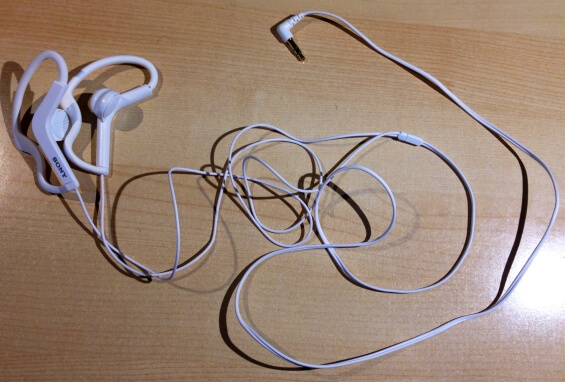
What I look for in headphones is not so much audio fidelity, or heavy bass, or whatever it is that music listeners are presumably looking for, as much as the reliable and constant delivery of the spoken word to my ears.
I’ve used the same pair of Sony MDR-AS200 “Active” Stereo Headphones, off and on, for a few years now – they’re reliable, lightweight, not-super tangly (though still tangly) and best of all they are cheap. “Active” is Sony’s way of saying these headphones are sweatproof. And they are. In fact, I go through other kinds of headphones very quickly. Listening is such a big part of my life that I don’t mind spending a bit of money on something that might improve my ability to listen, more and more efficiently. But when a pair of my regular wireless bluetooth headphones dies (which they do fairly frequently), and when the sun isn’t shining or I’m not going to be outdoors (that’s when I use my wireless bluetooth sunglasses with headphones) I need some regular backup wired headphones and the Sony MDR-AS200s are those for me.
I don’t like earbuds, I’ve never been able to use any without having them fall out and/or hurt my ears, and while the MDR-AS200 headphones do sit in the same place as earbuds they simply ride there – they don’t rub, or bump, or pop out or fall out. People seem to want to call these “over the ear” headphones, but the MDR-AS200 headphones are more secure than that – they go all-the-way-around-the-ear. The around-the-ear ear loops are marked, right and left, and each has an expandable section, adjustable by friction and able to travel just slightly more than the thickness of a pencil (approx. half an inch). This means if you are a person and you have ears – they can probably fit yours and that they won’t fall off.
As to the sound quality, I must stress that these headphones do not in any manner form a seal between your ear canal and the speakers that ride just outside of them. What this means is that at all times you can hear the outside world. This is perfect for navigating the stacks at a library, but possibly not so great for noisy environments like the gym (they’re sweatproof), the mall, or your own home (depending on your home).
I listen to a lot of podcasts, and listen to audio from YouTube videos, and sadly, not everyone who produces podcasts and YouTube videos has loud enough audio in their productions. If you’re in the same situation as me you must be aware that these MDR-AS200 headphones do not seal you off from the world – and so too-quietly-recorded podcasts and video audio will be nigh unhearable in anything like a noisy environment.
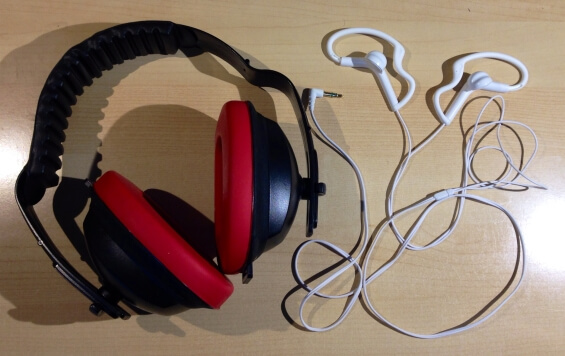
One last thing. The other reason I need to keep my Sony MDR-AS200 headphones on hand is for a specific in-home use. I don’t like vacuuming, but I will do it (when necessary) if I have these “active” headphones in my ears. They allow, when paired with some cheap plastic over-the-head ear protection earmuffs, a somewhat pleasant vacuuming experience.
A little feature from Sony’s design department:
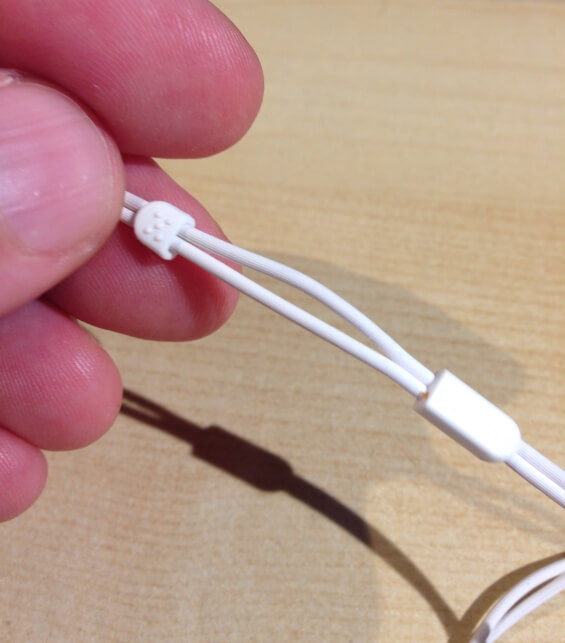
And a cute little hard plastic clothing clip, designed to prevent the cord from dangling or moving where you don’t want it to:
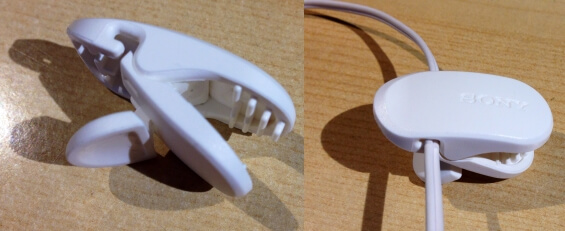
Usage and features from the manual:
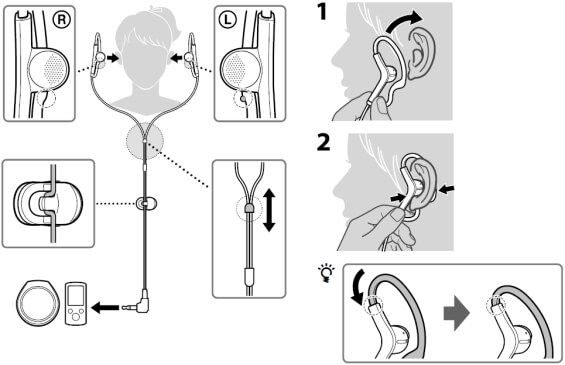
Posted by Jesse Willis
